Annual wages
If you don't get paid specifically by the hour (and even if you do) it can be hard to figure off the top of your head how much an hourly wage is in annual pay. So here's a quick look at $8.75 (current New York State minimum wage), $9 (NYS minimum wage next year), $10.10 (Obama admin's proposed minimum), $15, and up.
In this case, annual earnings = hourly rate x 2080 hours.
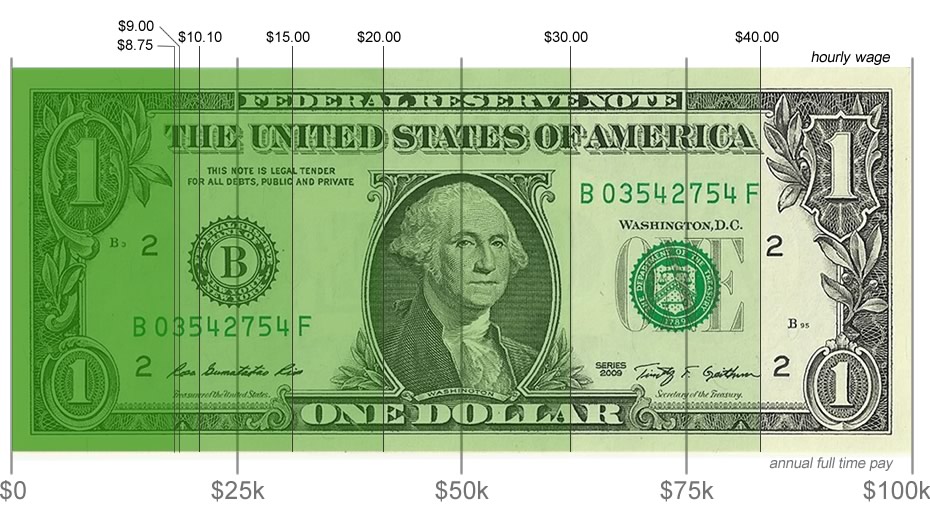
History of New York State minimum wage
A minimum wage consistent across many industries in New York State dates back to 1962. Here's how it's increased over time, with a comparison in 2015 dollars for some perspective. (Inflation calculations via the federal Bureau of Labor Statistics calculator.)
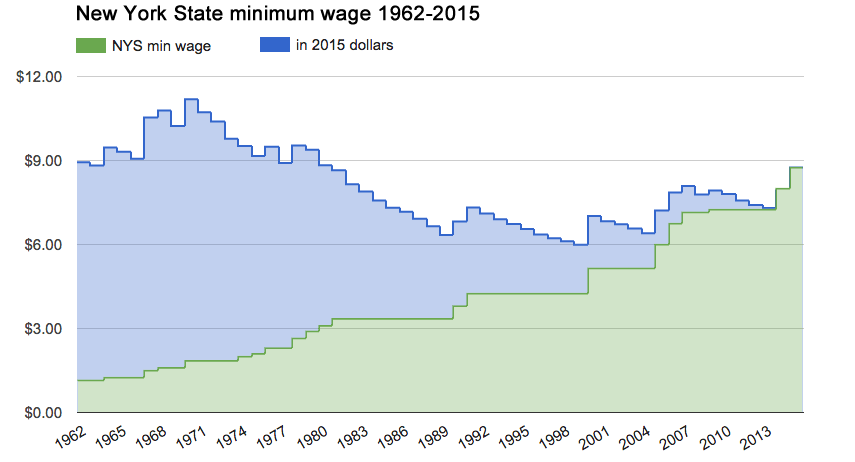
Inflation
One possible way of keeping the minimum wage current is to have it rise with inflation. But the starting point makes a difference. Here's a comparison of various New York State minimum wage levels and the tracks they would have taken if they had started following inflation from that year. (Inflation calculations again via that BLS calculator.)
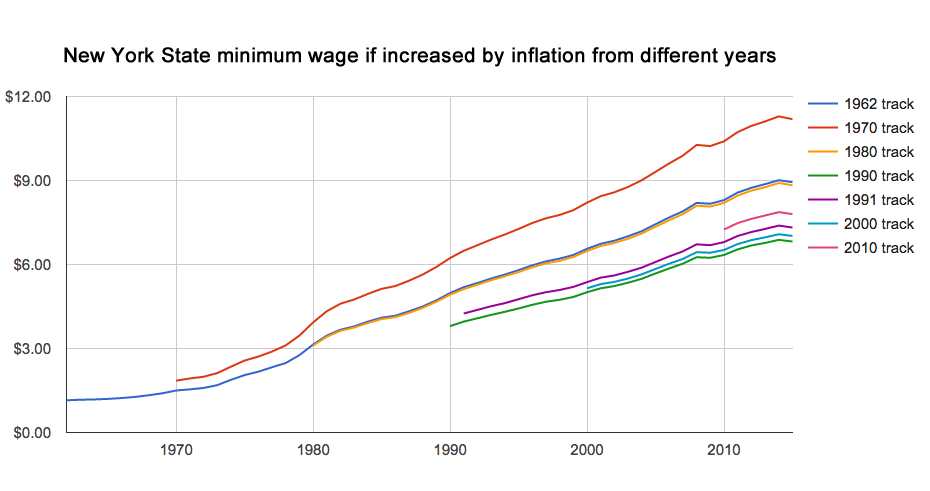
Poverty
A different guideline for thinking about the minimum wage: federal poverty thresholds. Here's how annual earnings from various hourly wages stack up against a few federal poverty thresholds.
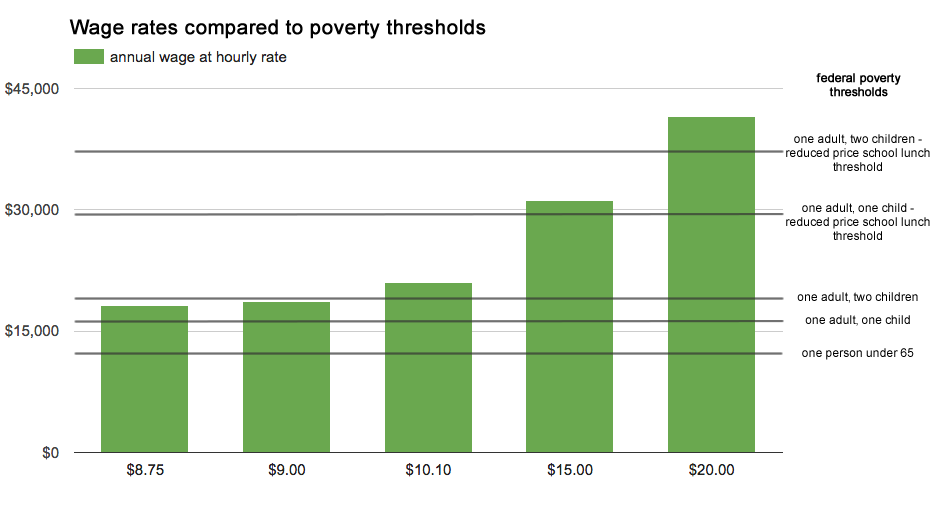
A housing wage
Another way too think about the minimum wage is in the context of a key expense: how must it costs to have a place to live.
Last year we wrote about the National Low Income Housing Coalition's report on "the housing wage," which looked at how minimum wages around the country stacked up against what it cost to rent an apartment.
Here are the numbers from that report for areas around New York State. Important note: These numbers were for the 2014 fiscal year, and the minimum wage used for some of the calculations was $8/hour, which was New York State's minimum last year. (It's now $8.75.)
FMR = Fiscal Year 2014 Fair Market Rent, determined by HUD. AMI = Fiscal Year 2014 Area Median Income (for a family), determined by HUD. In this case, "affordable" means a rent that's 30 percent of income.
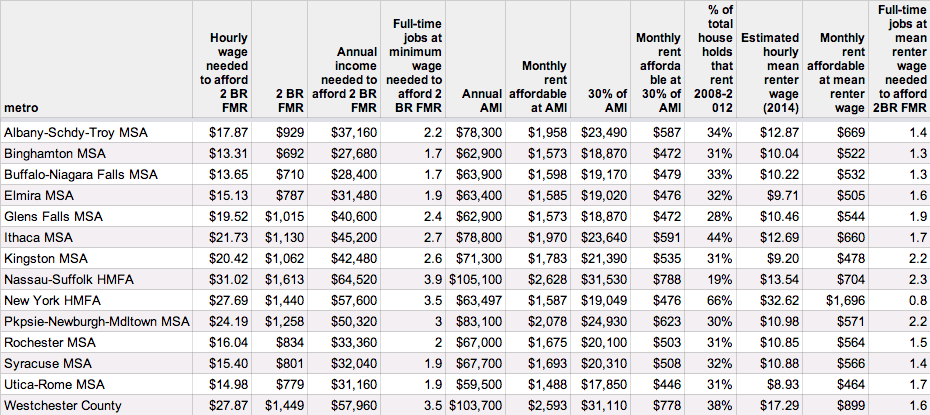
Based off what everyone else is making
Here's an interesting way: Base the minimum wage off the median earnings for people in each state -- specifically, make it half the median. That's the method proposed by UMass-Amherst economist Arindrajit Dube in a paper last year (here's a discussion of it over at The Atlantic). Dube also suggested adjusting the half-median rate based on regional differences in prices. That adjusted number is presented in the quick map below for states here in the Northeast:
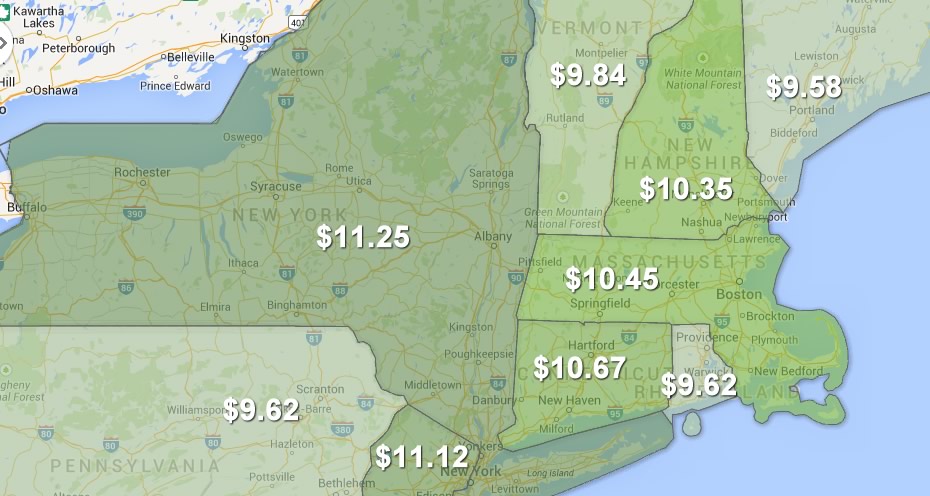
New York's rate is skewed a bit by the cost of living in New York City. We were curious about how much, so we looked up a figure called the "regional price parities" numbers for New York State metropolitan areas. (It's a number kept by the federal Bureau of Economic Analysis.) An area with prices that match the national average has a RPP of 100 -- higher, more expensive; lower, less expensive. Here are a few from around the state:
New York City metro: 122
Albany metro: 99.1
Buffalo metro: 93.8
Rochester metro: 97.7
Syracuse metro: 95.9
The Cuomo admin had floated a plan this year to raise the state minimum wage to $10.50 statewide -- except for New York City, where it would be $11.50.
One other bit about the regional price parity numbers: the Albany metro area's RPP for rents is 104.2.
The "Fight for 15" rallies got a lot of attention around the country this week, including here in the Capital Region, as people pushed for an increase in the minimum wage.
The current minimum wage in New York State is $8.75 per hour. It's scheduled to increase to $9 at the start of next year.
A lot of numbers get thrown around in these discussions, and sometimes it can be hard to keep in them context. So we put together a few easy-scan charts in an effort to get a better sense of things...
Charts
They're above in large format -- click or scroll all the way up.
What are the effects of raising the minimum wage?
One of the seemingly endless debates attached to discussions of raising the minimum wage is what effect increases on jobs and businesses. It's a complicated topic that we won't even dip our toe in. But if you're interested in reading about, a Guardian article this week look at some of the research. (Spoiler: There's not a clear answer.)
What's All Over Albany?
All Over Albany is for interested and interesting people in New York's Capital Region. In other words, it's for you. It's kind of like having a smart, savvy friend who can help you find out what's up. Oh, and our friends call us AOA.
Search
Recently on All Over Albany
When we started AOA a decade ago we had no idea what was going to happen. And it turned out better than we could have... (more)
This all feels like the last day of camp or something. And we're going to miss you all so much. But we'd like to stay... (more)
Working on AOA over the past decade has been a life-changing experience for me and it's shaped the way I think about so many things.... (more)
If winter ever gets its act together and drops more snow on us, there will be sidewalks to shovel. And shortly after that, Albany will... (more)
Last week we were fortunate enough to spend a few minutes with Jack McEneny -- former state Assemblyman, unofficial Albany historian, and genuinely nice guy.... (more)
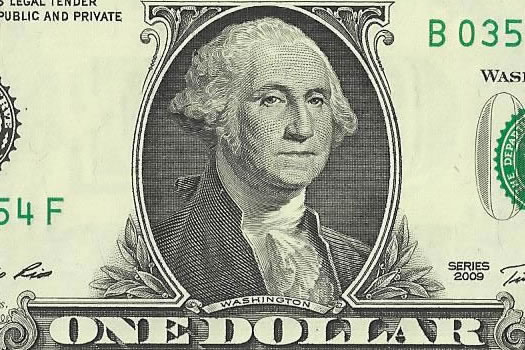






... said KGB about Drawing: What's something that brought you joy this year?